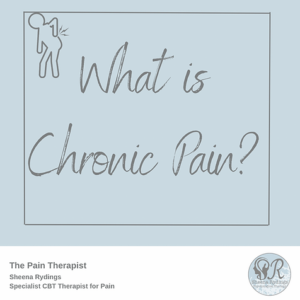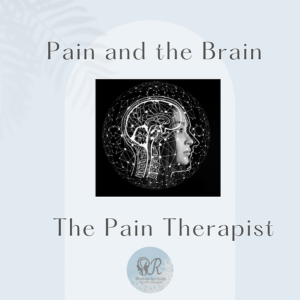I am proud, privileged and honoured to share a story of a wonderful, inspiring, strong and encouraging lady and her story of her pain journey. I specialise working with people with chronic pain and long term health conditions and I think it is important and inspiring for those in the journey to hear from someone who has gone through it. I hope this inspires and encourages people with chronic pain or long term health conditions with their journey. If you are struggling and want some support, please dont hesitate to reach out to me. I am here to help.
“I am 62 years old and have been living with chronic pain since my early forties. I saw my GP and after trying different medications I was referred to an orthopaedic consultant. I had X-rays and scans and was told there was nothing he could do but said that his colleague could help me. I saw his colleague who was an anaesthetist. I thought it a bit strange that I had been referred to him but didn’t question it as I was desperate for help. I had never heard the term “chronic pain” and still assumed I would be fixed. He told me I had moderate osteoarthritis at L3, L4, L5, S1 and also a bulging disc at L5. I also have degenerative disc disease and sacroiliac joint syndrome. He said not to worry as I was young and it didn’t mean I would always have pain and he could help me.
I then had repeated steroid injections into my spine and sacroiliac joints which gave some relief for around 6 weeks but the pain kept coming back. He then said he could do radiofrequency facet joint denervation which could ease my pain for up to a year or even permanently. I had this many times, around 9 months apart, each time being told the next time might even give me permanent pain relief. I didn’t get permanent or total relief but I did get noticeable relief so it was well worth the discomfort. I then received notification that BUPA would no longer fund the procedure and felt like a lifeline had been taken away.The consultant said that my GP could refer me to his NHS practice which was over an hour’s journey away but I was happy to travel to be able to have the procedure.

“This is the appointment that changed my life by taking my pain journey onto a different path!”
My own consultant was off sick so I saw his colleague. This was a pivotal moment in my Chronic pain management journey. She didn’t tell me not to worry or that she could stop my pain. Instead she told me the reality, which was that I would most likely continue living with some level of pain and that there were no operations or procedures that could cure me, at least not until she could offer me a new spine! She said that she could do the denervation procedure for me but she also said that I would need to learn to manage living with the pain in a way that would avoid me having so many flare ups and that the pain probably wouldn’t ever completely go away – rather that I would have good days and bad days. She said that she and her colleagues at the chronic pain clinic would help me to manage the pain but it would take effort and acceptance on my part. This was a shock as I wanted a cure! I felt devastated that I would be in pain every day (and night) for the rest of my life. I felt I had been given a terrible life sentence! I absolutely did not want to accept living with pain and was determined not to let it beat me. This all took its toll on my mental health and I became quite depressed. I would angrily do physical activities which then caused flare ups. I would then rest and recover only to repeat the cycle of boom and bust.
My family were always very supportive but sometimes became frustrated with me when it seemed that I was self-sabotaging. I found it extremely difficult to ask for help with things that I had always been able to do.
The pain clinic had a collaborative, hollistic approach to Chronic pain management, including medication management, physiotherapy and psychological therapy. This was all new to me and I was still very much in the grieving process for the life I felt I wouldn’t now have. I was stuck at the anger stage of the grieving process which didn’t help my very regular flare ups.
I saw my consultant again after my denervation procedure and can remember walking through the doors thinking I did not want to be this person living with chronic pain. I hated having to go to a chronic pain service as I wanted a cure!

The consultant reviewed my medication to make sure I was on the best plan to help manage my pain. This helped my pain levels, although the side effects were unpleasant and the pain never completely went away. Next I saw the Physiotherapist who encouraged me to “move” and helped me with strengthening and stretching exercises. She also advised on practical living tips, suggesting alternative ways of doing things I found difficult, such as a different way of putting the ironing board up. Simple lifestyle techniques that I hadn’t thought about. She said flare ups were a part of living with chronic pain and the best way to deal with them was to try to avoid them. I thought this ridiculous as if I had some control of flare ups! I now know that I do have some control over the severity and regularity of them and there are things I can do to try to lessen them.
I cried every time I saw my consultant. One appointment saw me crying because I was struggling to do the washing. Her response was “why would you want to do the washing if your husband is happy to do it”. She had a point!
Psychological therapy was suggested and I assumed that she thought the pain was all in my mind but she said absolutely not. I was feeling quite depressed at the time so thought it might help me to feel a bit better. It actually helped me massively! I didn’t know what a huge impact my mood has on my pain.
Because my condition was progressive I assumed I would soon become very disabled. We put our house on the market so that we could move to a bungalow. That was 18 years ago and we are still in a house with stairs. I am realistic that a bungalow might make life easier in the future but until then I’m happy where I am. With the support of the team at the pain clinic they helped me to understand my pain and it’s triggers.
“I realised that my brain and body isn’t against me or wanting to hurt me, it is actually trying to protect me but it sometimes has its wires a bit crossed!”
The pain clinic taught me how to “pace”. This was a slow process – I found it hard not to do lots when I felt ok, then I was fit for nothing the next day (booming and busting). However pacing is now a massive part of my everyday life and is by far my best pain management tool. I use the spoon theory in my daily life and have found this to be a good way for my family to understand how much “pain energy” I have. For example I can go for a stroll in the morning but then need rest in the afternoon. I can still do lots of things but I have to “pain manage” activities to avoid overdoing it and also keep my pain at manageable levels.
I learnt how to manage my medication. It went against what I believed to take pain relief before the pain got really bad as it felt like “giving in” and it took me a while to put this into practice. But with support I learnt how to best manage my pain relief, including ramping it up when I feel a flare up starting. This helps to lessen the time I am in flare up and also the severity of it.
One of the triggers for my pain increasing is stress and daily mindfulness helps to keep my stress levels low and calms me when I start to feel stressed. I won’t miss a day without it now.
I’m still not perfect at managing my pain and I do still have flare ups. Sometimes they creep up on me when the weather is bad or I have stressful times. Most of the time though I am aware of flare ups before they get too severe. Early on in my pain journey a flare up meant staying in bed for a week followed by 3 weeks of inactivity. Nowadays, I go into “emergency pain mode” at the first signs of a flare up by increasing my medications and resting/using heat and gently mobilising.
I have reluctantly had to give up lots of the activities I used to enjoy and I grieved for the loss of those parts of my life. However over time those activities have been replaced by others and although very different they are no less enjoyable. Just different! I was initially embarrassed to use a walking stick and would hide from people I knew when using it. Actually it enables me to walk further and for longer so I now embrace it when I need it.
The pain clinic helped me to understand my pain and it’s triggers. More importantly they helped me learn how to live well with pain. At one time I would have thought “living well with pain” was a nonsense statement but I enjoy my life and feel that I do live well alongside my pain.
I do still struggle and my pain and its impact on my life does sometimes get me down and there are days when it would be lovely to put my pain in a drawer for a little while. But I no longer do battle with it or feel like I’m giving in when I need to rest.
I have accepted that pain is a part of my life. I feel very lucky to live the life that I do and I owe it to myself and those around me to be happy and enjoy life so that’s what I plan to continue doing.”



